Ford F-350 (2002-2022) firing order — diagram & guide
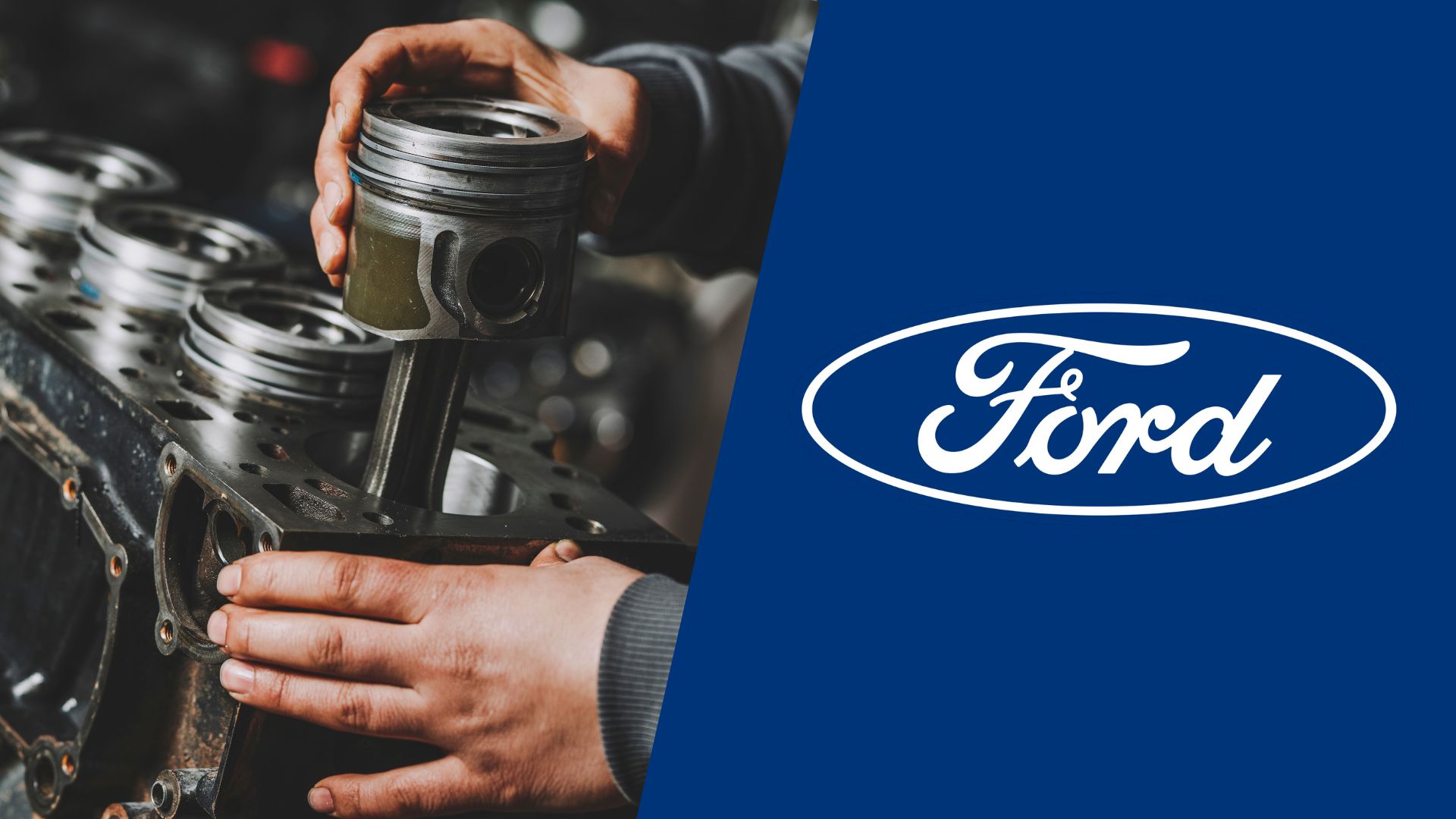
Ever since the late 1990s, Ford’s F-Series trucks started getting updated for more towing capacity and with more robust chassis. One of the main models that emerged at that time was the Ford F-350 which was added on top of the regular F-150 and the F-250.
However, these models have shared a lot of the engine options so most drivers wonder about the Ford F-350 (2002-2022) firing order when it comes to maintaining the truck’s engine. That’s why we’ll cover all the engine options and their respective firing orders featured through the generations of the F-350 to guide you regardless of the engine type used in your truck.
| CAR MODEL YEAR | ENGINE | FIRING ORDER |
|---|---|---|
| 2002-2004 Ford F-350 (1st Gen) | 5.4L V8 | 1-3-7-2-6-5-4-8 |
| 6.8L V10 | 1-6-5-10-2-7-3-8-4-9 | |
| 2008-2010 Ford F-350 (2nd Gen) | 5.4L V8 | 1-3-7-2-6-5-4-8 |
| 6.8L V10 | 1-6-5-10-2-7-3-8-4-9 | |
| 6.4L PowerStroke | 1-2-7-3-4-5-6-8 | |
| 2011-2016 Ford F-350 (3rd Gen) | 6.2L V8 | 1-5-4-8-6-3-7-2 |
| 6.7L PowerStroke | 1-3-7-2-6-5-4-8 | |
| 2017-2022 Ford F-350 (4th Gen) | 6.2L V8 | 1-5-4-8-6-3-7-2 |
| 7.3L V8 | 1-5-4-8-6-3-7-2 |
First-generation Ford F-350 (2002-2004) firing order
Back in 2002 when the F-350 debuted in the Super Duty form, Ford decided to go with the two most reliable engine options. The truck was equipped either with a 5.4-liter V8 or with a 6.8-liter V10 depending on the trim.
Ford F-350 5.4L firing order

The 5.4-liter V8 was a base option for the Ford F-350 Super Duty back in the early 2000s and it also had a supercharged version derived from the SVT Cobra engine. The Ford F-350 5.4L firing order is 1-3-7-2-6-5-4-8 and it’s the most common engine found in all of the F-Series models of that time.
It proved to be a pretty reliable option, but if you had to check the cylinders for misfires and change the spark plugs, we’ll tell you how to do it. So, cylinders 1, 2, 3, and 4 are all located on the passenger’s side of the engine with cylinder 1 being the closest one to the radiator housing.
The cylinders go from 1 to 4 front to rear, and the same goes for cylinders 5, 6, 7, and 8 on the driver’s side.
Ford F-350 6.8L firing order
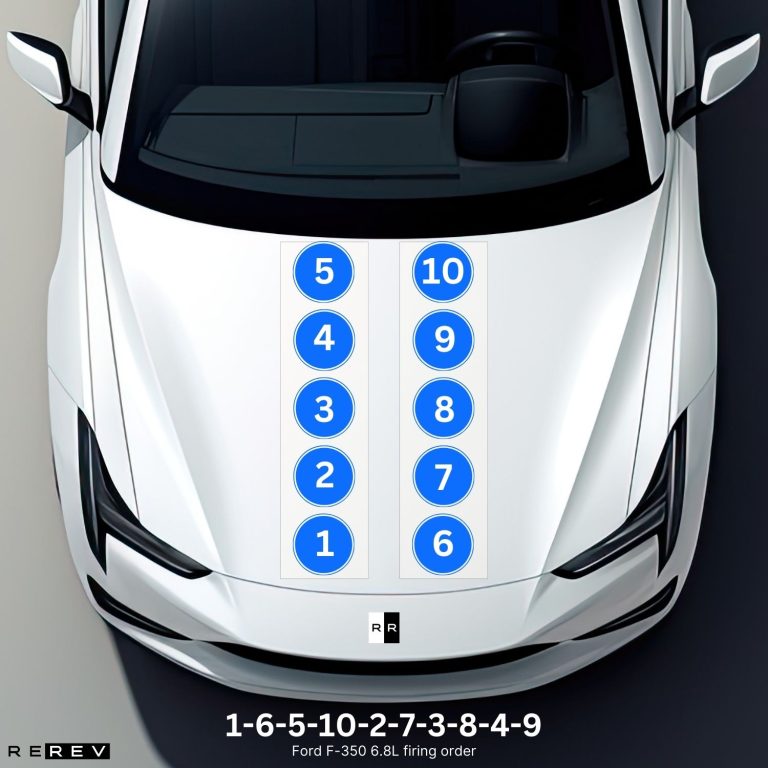
Along with the V8 option, the F-350 also featured a mighty 6.8-liter V10 engine which was the only V10 ever used in the F-Series of Super Duty trucks. It’s also one of the most reliable options and the Ford F-350 6.8L firing order is 1-6-5-10-2-7-3-8-4-9.
Having in mind the different cylinder order and two extra cylinders, this engine has a different firing configuration and cylinder placement. So, the driver’s side of the engine features cylinders 6, 7, 8, 9, and 10 front to rear, making the first cylinder the front-most one on the passenger’s side.
That cylinder bank also includes cylinders 2 to 5 front to rear, so that makes cylinder identification pretty easy and convenient for this engine.
Second-generation F-350 (2008-2010) firing order
The second-gen F-350 models also featured the same two engine options as the first one in the form of the 5.4-liter V8 and the V10 engine. However, there’s also the addition of a 6.4-liter PowerStroke diesel engine.
Ford F-350 6.4L firing order
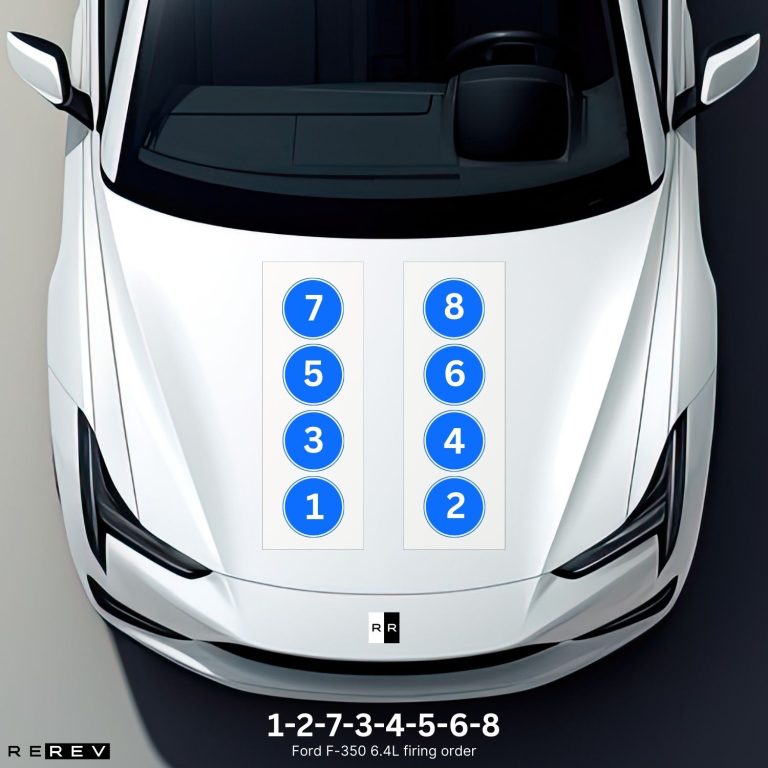
Especially for the Super Duty version, the diesel engine was pretty popular due to its higher towing capacity and more torque provided when compared with the petrol V8 counterpart. So, the Ford F-350 6.4L firing order is 1-2-7-3-4-5-6-8 and that goes for all the Powerstroke models.
For this engine, the first cylinder is located on the passenger’s side along with cylinders 3, 5, and 7 front to rear. Cylinders 2, 4, 6, and 8 are on the opposite side placed front to rear and the thing that makes maintaining this engine a bit easier is that it doesn’t have regular spark plugs like petrol engines.
Third-generation Ford F-350 (2011-2016) firing order
A lot of change has come with the third generation of the F-350 and the base engine options were completely switched for this one. Instead of the regular V8 and V10, we’ve got the new 6.2-liter V8 engine, and the 6.4-liter PowerStroke was switched with the 6.7-liter diesel engine, so let’s check out the difference in firing orders together:
Ford F-350 6.2L firing order
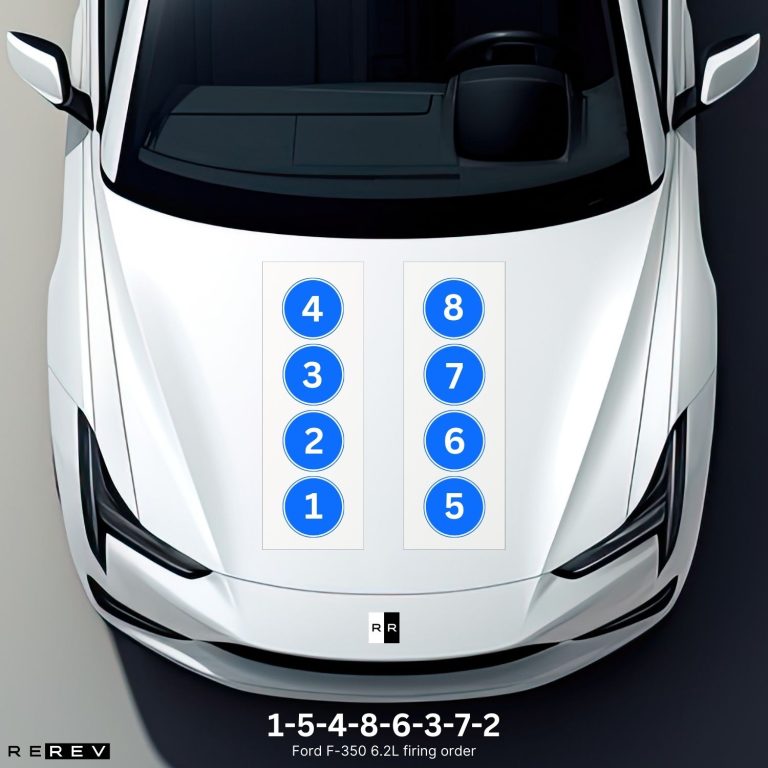
The 6.2-liter V8 came instead of the 5.4-liter V8 and the Ford F-350 6.2L firing order is 1-5-4-8-6-3-7-2. This engine also has a different configuration as the first cylinder is on the driver’s side this time along with cylinders 3, 5, and 7 from front to rear.
The cylinders 2, 4, 6, and 8 are on the passenger’s side front to rear, so this engine is pretty convenient for DIY maintenance by using the firing order.
Ford F-350 6.7L firing order
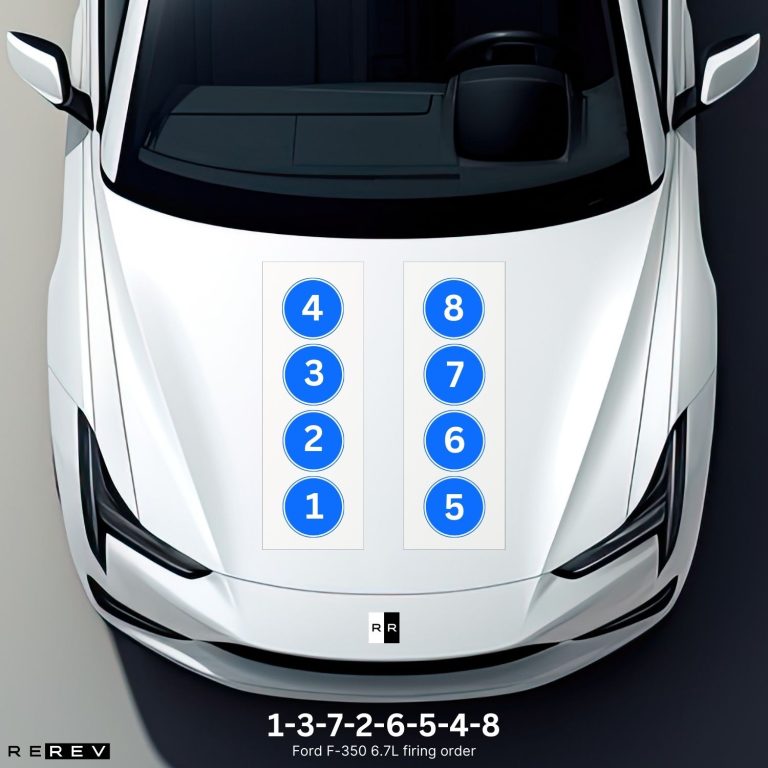
As for the diesel variant, the F-350 used the upgraded version of the PowerStroke engine instead of the 6.4-liter one. So, the Ford F-350 6.7L firing order is 1-3-7-2-6-5-4-8 and the cylinder configuration is also different from the previous 6.4-liter diesel engine.
So, the first cylinder is on the passenger’s side along with cylinders 2, 3, and 4 from front to rear. Cylinders 5, 6, 7, and 8 are on the driver’s side front to rear, so it’s crucial to differentiate this one from the 6.4-liter PowerStroke in that regard.
Fourth-generation F-350 (2017-2022) firing order
Finally, the fourth-gen F-350 once again featured the regular 6.2-liter V8 gas option, but this time it came without a diesel option. Instead, there was a massive 7.3-liter petrol V8 as the new heart for the Super Duty version and we’ll break down the firing order and cylinder configuration of that one to wrap it all up.
Ford F-350 7.3L firing order

The Ford F-350 7.3L firing order is 1-5-4-8-6-3-7-2 so the firing order of this engine matches with the 6.2-liter one which can sometimes be a relief. However, the cylinder configuration is different so you should pay attention to that.
The first cylinder is on the passenger’s side, and cylinders go 1, 2, 3, 4 from front to rear in that bank, and 5, 6, 7, and 8 from front to rear in the opposite bank.
Our take
Ever since the debut of this model in 2002, there were numerous different engine options used for the F-350. So, we hope we’ve shed some light on these options and their respective firing orders to help you navigate the cylinder layouts and fix some minor issues and even misfires.
Make sure to pay close attention to the cylinder configuration since not all the gas and diesel options feature the same cylinder arrangement and that can be crucial for proper maintenance.